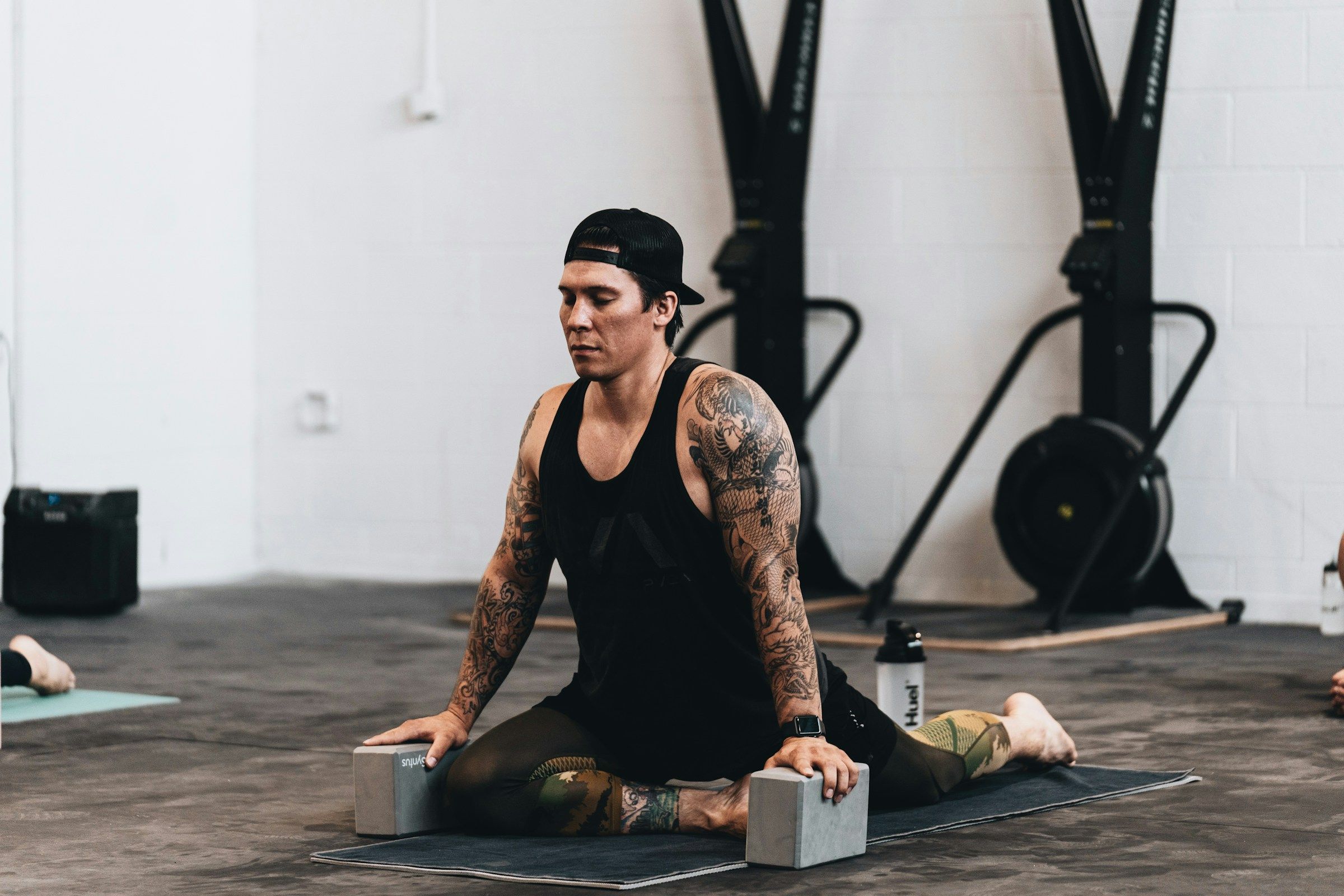Running offers a simple way to burn calories, improve fitness, and lose weight. But what if you’re trying to get more specific, like how many calories are burned running a mile? Sure, you could just jump on the Internet and find a generic answer, but that wouldn’t tell you how running impacts your unique calorie burn or help you maximize your workout to get better results. Instead, this article will help you understand precisely how running impacts calorie burn so you can learn actionable strategies to maximize your workout effectiveness for better fitness and weight loss results.
Goldi AI’s calorie tracker takes the guesswork out of calorie tracking by helping you understand precisely how running impacts your unique calorie burn. You’ll learn to optimize your running routine for better results by tracking your workouts over time with the best app to track macros and colories.
Can Running 1 Mile a Day Lose Weight?
Endurance activities like running, swimming, and cycling have many benefits for weight loss. These aerobic exercises burn many calories, which can help create the calorie deficit necessary for dropping pounds. While many factors contribute to weight loss, the basic premise is that the more you do these endurance activities, the more weight you will lose.
Studies show that running provides more bang for your buck. The quicker your heart beats, the more calories you burn, and running elevates your heart rate higher than swimming or cycling at the same intensity. For this reason, adding a running routine to your weight loss strategy can be effective.
How Running a Mile a Day Helps You Lose Weight
Running a mile daily can help you lose weight by creating a calorie deficit. Running burns calories, and the more you do it, the more weight you can lose. For example, if you weigh 180 pounds and run a mile at a 10-minute pace, you will burn about 17 calories per minute, or 179 calories, according to the American Council on Exercise.
If you run a mile daily for a week, you will burn 1,253 calories, and that’s just from your daily run. If you maintain your current diet, this deficit could help you lose about one-third of a pound of fat in just a week. Of course, individual results will vary. How much weight you lose running a mile a day will depend on several factors, including your:
- Diet
- Metabolism
- How consistent you are with your running routine
Still, research shows that running can be a practical part of a broader weight-loss strategy.
How Many Calories Does Running Burn?
If you’ve ever asked, “How many calories does running a mile burn?,” there’s a good chance you received a popular answer: about a hundred calories. But in reality, that number seriously varies from person to person. To estimate calorie burn, scientists use a unit called a metabolic equivalent for task, or MET.
What Factors into How Many Calories You Burn Running?
Remember, all those numbers are just an estimate. “Anything you do to increase the amount of work—or, force applied over distance—is going to increase the amount of oxygen you use and the number of calories you burn,” says French. The factors below can impact the amount of work you’re applying:
Your Bodyweight
For starters, force = your body weight. “The more weight you’re carrying, the more work you have to do to move it,” says Milton. That’s why a heavier person will burn more calories than someone who weighs less, even if they’re running the same pace for the same time.
For example, according to estimates from the American Council on Exercise, a 140-pound person likely burns 13.2 calories per minute while running, a 160-pound person burns 15.1, and a 180-pound person burns 17. If you want to increase your calorie burn, you could run in a weighted vest.
Your Speed and Intensity
Upping your speed and intensity also requires more oxygen, which increases your calorie burn. Compare the 10-minute mile pace, which burns 624 calories per hour, to the eight-minute mile pace, which burns 751 calories per hour. It’s not always easy to drop minutes per mile, but including intervals can help you reap the calorie rewards of a faster pace. (Try incorporating these calorie-burning intervals into your running workouts.)
You don’t need to run fast to burn many calories, though. You can always run longer instead; jogging for 60 minutes will burn approximately the same calories as running 30 minutes at a six-minute mile pace.
Add an Incline
Another way to jack up your calorie burn without changing your pace is to run hills or do incline work on a treadmill. “Your heart is going to have to work harder to handle those inclines at the same pace as it would on flat ground, and that translates to more calories burned,” says Milton
How Many Calories Are Burned Running a Mile?
The average number of calories burned when running a mile is approximately 100 calories, according to Dr. Daniel Vigil, an associate clinical professor of health sciences at David Geffen School of Medicine at UCLA. This number can vary widely based on individual factors, such as:
- Weight
- Speed
- Running intensity
For instance, a 150-pound person may burn approximately 100 calories per mile. Still, if a 120-pound person runs a 10-minute mile, they’ll burn 114 calories. If that person weighed 180 pounds, the calorie burn goes up to 170 calories running that same 10-minute mile. It’s also worth noting that the individual’s weight matters more than intensity regarding calorie burn. Dr. Vigil explains, “People who weigh more burn more calories per mile because it takes more energy (calories) to move a larger body the equivalent distance at a given pace.”
Factors Affecting Caloric Burn Running a Mile
Remember that while weight is the most significant factor in how many calories you burn running a mile, speed, intensity, and environment also play a role. The more you understand how these elements affect caloric burn, the better you can estimate how many calories you may burn on your next run.
Speed and Intensity
The faster you run, the more calories you burn. When you dash, your cells work harder than usual, so you burn more calories. That means you’ll burn more calories running three miles in 30 minutes than in 45 minutes.
Environment
Running on hills requires more energy, which burns more calories than running on flat ground. Outdoor running might also burn more calories due to air resistance and wind than indoor running on a treadmill.
Gender
Some evidence suggests that males burn more calories than females when they complete the same activities. Males typically have more muscle mass, which burns more calories than fat, than females.
Tools to Estimate Caloric Burn Running a Mile
Many fitness apps offer personalized estimates for calories burned running a mile based on individual factors like weight, speed, and running intensity. Various tech tools can help estimate the number of calories burned running. Some smartphone apps let you track your calories burned by running. For example, Goldi AI transforms calorie tracking with our cutting-edge AI technology. Just snap a photo of your meal, and we’ll do the rest.
Our app combines your phone’s depth sensor with advanced AI models to:
- Analyze food volume
- Identify ingredients
- Instantly calculate calories, protein, carbs, and fat content.
With 90% accuracy on visible foods and multiple tracking options like barcode scanning, food label recognition, and manual description for complex items like smoothies, we’ve made nutrition tracking effortless. Other popular options include MapMyRun and apps by shoe brands like:
- Nike Run Club
- PUMATRAC
- Adidas Running App by Runtastic
Other Benefits of Running
Like other types of exercise, running helps improve overall health. Physical activity helps lower the risk of infectious illnesses, manage weight, and improve all-cause mortality.
According to the Centers for Disease Control and Prevention, adults should aim for at least 150 minutes of moderate aerobic activities per week. That’s 30 minutes per day, five days per week. Running and other aerobic activities help strengthen your heart and lungs. For example, here’s how many calories a 154-pound person will burn with 30 minutes of different moderate aerobic activities:
- Bicycling (i.e., less than 10 miles per hour): 145
- Dancing: 165. Golfing: 165. Hiking: 185. Light gardening or yard work: 165. Light weight lifting: 110
- Stretching: 90
- Walking (i.e., about 3.5 miles per hour): 140
Nevertheless, the numbers provided are only estimates. To see results, you also need to ensure the app is in use for the duration of your workout, which means carrying your phone with you on your runs.
How to Calculate Your Personal Calorie Burn
It’s hard to pinpoint how many calories you burn running a mile. Various factors come into play, including your weight, speed, age, and sex. You can use this simple formula to estimate calorie burn: Multiply your weight in pounds by 0.63 for running. This gives you the number of calories burned per mile.
Multiply that number by the number of miles you run. For example, if you weigh 150 pounds and run a mile, you’ll burn about 94 calories: 150 x 0.63 = 94.5. Of course, the best way to estimate your calorie burn accurately is to use a wearable fitness device, like a Fitbit.
These devices track your heart rate and distance, then apply your metrics to calculate an accurate calorie burn. Many allow you to log your fitness data to track progress over time.
Getting Started: Easing into a Running Program
If you’re new to running, you must ease your body into it. Before starting an exercise plan, talk to your doctor, especially if you have chronic health conditions. To run without risking injury, you need the right shoes. Running shoes differ from walking, tennis, aerobics, or basketball shoes. They’re designed to provide good support and prevent foot and knee pain during a run.
There are many different shoe styles on the market. Try different brands to find the best fit for your feet. Some running stores allow you to test their shoes on a treadmill. Your doctor or trainer can help you determine what to look for in a running shoe.
After you have the boots, it’s time to start training. A good general plan is to begin with a brisk walk and add run intervals to your workout. For example, you might walk briskly for 5 minutes, then jog for 45 seconds and repeat this a few times. Each workout will allow you to build endurance, and you can soon run the full mile.
Calculating Your Personal Calorie Burn
While it’s hard to pinpoint the number of calories each person burns during a mile run, wearable fitness trackers like Fitbit can get close. These devices can measure your heart rate and how far you’ve run. After you’ve entered your height and weight, the device calculates using all the information it’s given.
Many wearable fitness trackers also allow you to store your fitness data, making it easy to track your progress and set goals.
Boosting Your Calorie Burn
Try adding strength training to your cardio if you want an extra burn. Lifting weights or using your body weight (think pushups) helps you build muscle. When you mix cardio and weight exercises into the same workout, it’s called circuit training. For example, you might do a quick sprint, then a few pushups, another sprint, and so on. These exercises burn more calories together than they do individually due to EPOC.
Track Your Calories within Less Than 15 Seconds with Our Calorie Tracker App
Goldi AI transforms calorie tracking with cutting-edge AI technology. Just snap a photo of your meal, and we’ll do the rest.
Our app combines your phone’s depth sensor with advanced AI models to:
- Analyze food volume
- Identify ingredients
- Instantly calculate calories, protein, carbs, and fat content.
With 90% accuracy on visible foods and multiple tracking options like:
- Barcode scanning
- Food label recognition
- Manual descriptions for complex items like smoothies
We’ve made nutrition tracking effortless. Whether you’re scanning a full meal or a quick snack, Goldi AI
- Provides nutritional information in under 15 seconds
- Eliminates the need for tedious manual logging.
Our AI learns from your feedback to improve accuracy. It includes personalized insights and smart reminders to keep you on track. Goldi AI makes achieving your fitness goals simpler than ever.
Track your calories with your camera using Goldi AI’s calorie tracker today.



